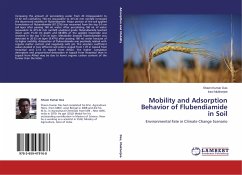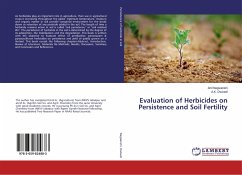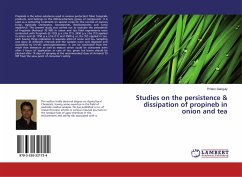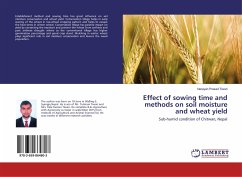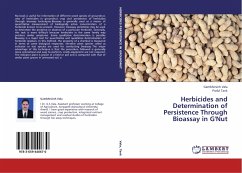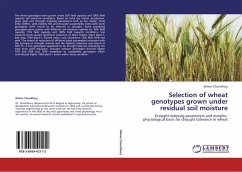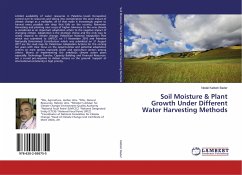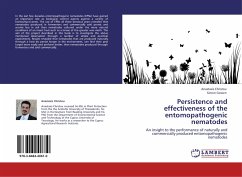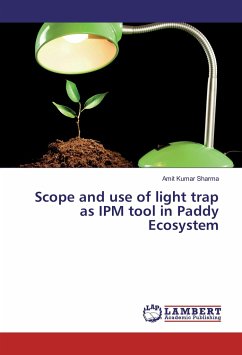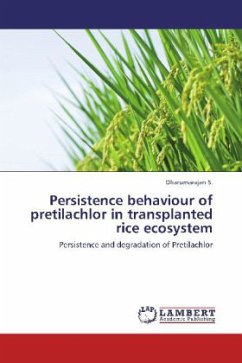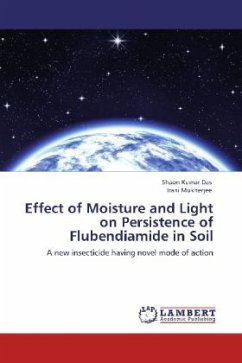
Effect of Moisture and Light on Persistence of Flubendiamide in Soil
A new insecticide having novel mode of action
Versandkostenfrei!
Versandfertig in 6-10 Tagen
32,99 €
inkl. MwSt.

PAYBACK Punkte
16 °P sammeln!
Trend in dissipation was submerged (T1/2 150.5-158.4 days)field capacity (T1/2 177.0-181.1 days) dry (T1/2 206.6-215.0 days). Slightly faster dissipation was observed at 1.0 g g-1 level as compared to 10 g g-1 level. Flubendiamide residues persisted in water beyond 250 days with a half-life ranging from 250.8-301 days. Dissipation from water was faster at pH 4.0 (T1/2 250.8 days), followed by pH 9.2 (T1/2 273.6 days) and 7.0 (T1/2 301.0 days). Application of 2.5% compost to soil enhanced degradation of flubendiamide under both field capacity (T1/2 155.1 days) and submerged condition (T1/2 130....
Trend in dissipation was submerged (T1/2 150.5-158.4 days)field capacity (T1/2 177.0-181.1 days) dry (T1/2 206.6-215.0 days). Slightly faster dissipation was observed at 1.0 g g-1 level as compared to 10 g g-1 level. Flubendiamide residues persisted in water beyond 250 days with a half-life ranging from 250.8-301 days. Dissipation from water was faster at pH 4.0 (T1/2 250.8 days), followed by pH 9.2 (T1/2 273.6 days) and 7.0 (T1/2 301.0 days). Application of 2.5% compost to soil enhanced degradation of flubendiamide under both field capacity (T1/2 155.1 days) and submerged condition (T1/2 130.8 days). Residues dissipated faster under UV-light (T1/2 7.0-9.1 days), in comparison to sunlight (T1/2 12.0-19.1 days) and dark light (T1/2 33.4-44.2 days). Reduced leaching was observed in case of formulation treatments as compared to analytical grade material. Metabolite desiodo flubendiamide was found to be more mobile than flubendiamide. In case of analytical grade flubendiamide even after leaching with water equivalent to 415.4 mm rainfall, more than 68.08% residues remained in top 5-10 cm soil layer.



